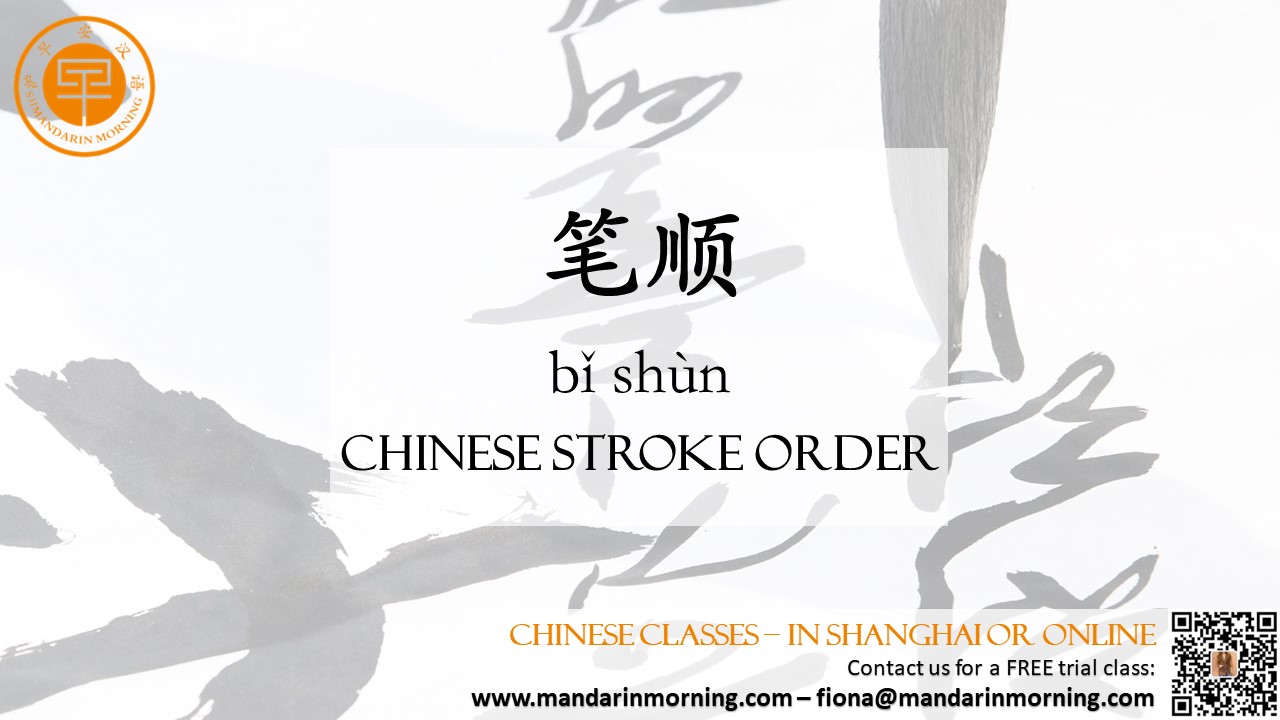| Many people are often fascinated and attracted by Chinese characters. At first glance, characters may look like bizarre pictograms, randomly drawn at will. But did you know that Chinese characters all consist of fixed stroke orders and follow a specific set of rules? Chinese character stroke order, called 笔画顺序 (bǐhuà shùnxù) or 笔顺 (bǐshùn), refers to the order in which the separate strokes that make up Chinese characters are written.  First learn stroke order, then learn Chinese characters The Chinese idiom 磨刀不误砍柴工 (módāo bù wù kǎnchái gōng) provides a dose of age-old wisdom: sharpening the axe does not delay cutting the wood. What does this have to do with Chinese stroke order and learning Chinese characters, you may ask? Everything. Knowing stroke order accelerates the memorization of characters and unlocks a deeper understanding of the structure of every Chinese character you encounter. Once you know stroke order, you can memorize Chinese characters more quickly. How many total possible strokes are there in Chinese? There are 41 basic and compound Chinese strokes. However, they are generally categorized into eight types, also known as the 永字八法 (yǒngzìbāfǎ; Eight Principles of Yong). This name derives from the fact that the character 永 (yǒng) encompasses all eight of the main Chinese strokes. The eight basic strokes used to write Chinese characters are as follows: 横 héng (一) horizontal stroke 竖 shù (丨) vertical stroke 撇 piě (丿) left-slanting downward stroke 点 diǎn (丶) dot stroke 捺 nà (㇏) right-slanting downward stroke 提 tí (㇀) upward lifting stroke 折 zhé (���) folding stroke 钩 gōu (亅) vertical hook to the left stroke The six main rules of Chinese stroke order 1. Top to bottom: 从上到下 (cóng shàng dào xià) 2. Left to right: 从左到右 (cóng zuǒ dào yòu) 3. First horizontal, then vertical: 先横后竖 (xiān héng hòu shù) 4. First right-to-left diagonals, then left-to-right diagonals: 先撇后捺 (xiān piē hòu nà) 5. Center comes first in vertically symmetrical characters: 先中间后两边 (xiān zhōngjiān hòu liǎngbiān) 6. Move from outside to inside and close frames last: 从外到内 (cóng wài dào nèi),先进后关 (xiān jìn hòu guān) |